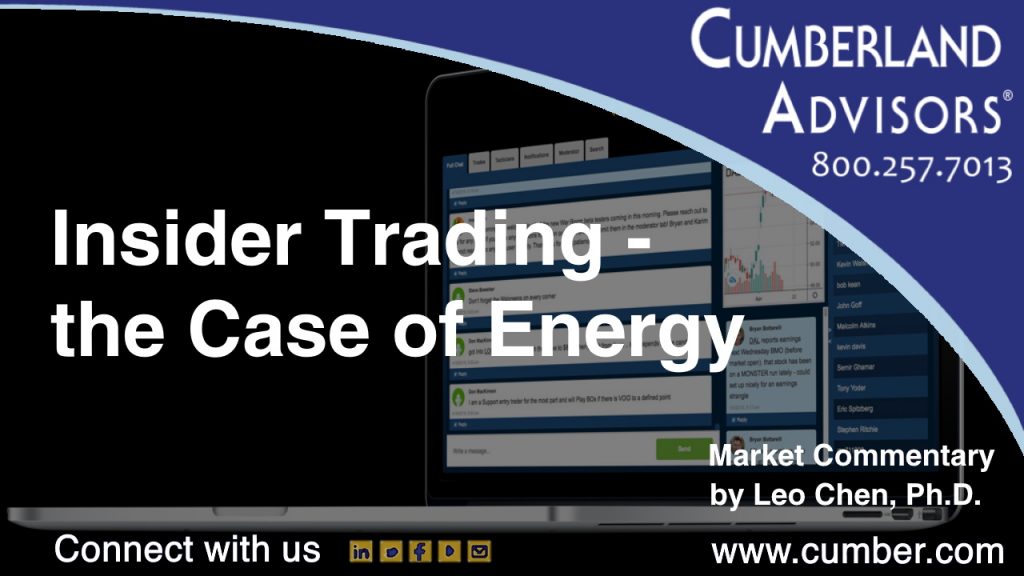Our last commentary on insider trading studied post-insider-purchase-spike (PIPS) market performance (https://www.cumber.com/cumberland-advisors-market-commentary-insider-trading-what-does-it-tell-us/). We found that the 6-month market return is 13.54% on average after the insider buy/sell ratio rises above 1. Today we will demonstrate the PIPS effect using the Energy sector as an example.
Undoubtedly, corporate insiders possess an informational advantage over outsiders. The advantage is negatively correlated with firm size. Although Energy made up 13% of the S&P 500 in 2008 when oil crossed above $100 per barrel, it accounts for only 3% by sector weight nowadays, which makes it an ideal candidate for a PIPS analysis, given its pronounced size. The insider buy/sell ratio rose to 1.88 in March, the highest reading since 2008. In the meantime, corporate insiders from the Energy sector purchased $471 million in their own stocks from late February, when the sell-off started, to the end of March – that’s almost as much as the combined volume from April to August.

Now let’s drill into Energy sector performance. Using the Energy sector ETF XLE as an example, we see that it is down about 33% since its peak back in February. But that is not the case for insiders. The $471 million in shares purchased by corporate insiders during the sell-off is worth roughly $900 million currently. In addition, insiders bought the most shares when the sell-off intensified, and almost stopped buying as soon as the market bottomed, as shown in Chart 1. The correlation between insider buying and the market drop during the period was 93%, an extremely high level. Interestingly, this finding is in line with academic research. For example, Biggerstaff et al. (2020) find that corporate insiders trade in short windows of time because their informational advantage is fleeting.
At Cumberland, we constantly track these activities across all S&P 500 sectors to seek market signals. If you have any questions, please reach out to me at [email protected].
Leo Chen, Ph.D.
Portfolio Manager & Quantitative Strategist
Email | Bio
Links to other websites or electronic media controlled or offered by Third-Parties (non-affiliates of Cumberland Advisors) are provided only as a reference and courtesy to our users. Cumberland Advisors has no control over such websites, does not recommend or endorse any opinions, ideas, products, information, or content of such sites, and makes no warranties as to the accuracy, completeness, reliability or suitability of their content. Cumberland Advisors hereby disclaims liability for any information, materials, products or services posted or offered at any of the Third-Party websites. The Third-Party may have a privacy and/or security policy different from that of Cumberland Advisors. Therefore, please refer to the specific privacy and security policies of the Third-Party when accessing their websites.
Sign up for our FREE Cumberland Market Commentaries
Cumberland Advisors Market Commentaries offer insights and analysis on upcoming, important economic issues that potentially impact global financial markets. Our team shares their thinking on global economic developments, market news and other factors that often influence investment opportunities and strategies.


